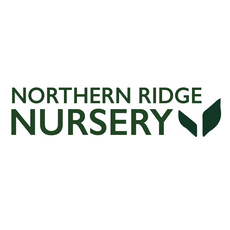Ultimate Guide to Container gardening: Tips & Tricks for 2023
Welcome to our all-encompassing guide on Container gardening for the year 2023! Whether you are a novice looking to start your first plant project or a seasoned green thumb aiming to expand your gardening horizons, Container gardening offers a versatile solution for growing plants in limited spaces. This guide will provide detailed insights into making the most out of your Container gardening efforts, including the selection of containers, suitable plants, soil composition, watering needs, and much more. Let's grow a flourishing garden in any space!
What is Container gardening?
Container gardening is the practice of growing plants, including edible plants, flowers, and herbs, in containers instead of planting them in the ground. It's an ideal solution for urban dwellers with limited garden space or anyone looking to create a manageable, compact garden. Containers can range from traditional pots and planters to more innovative items like repurposed barrels, plastic buckets, or even hanging baskets.
Choosing the Right Containers
The first step in successful Container gardening is selecting the right containers to suit your plants and space. Here’s what you need to consider:
- Material: Containers are made from various materials including clay, plastic, metal, and wood. Each has its advantages and disadvantages in terms of weight, durability, and breathability.
Best Plants for Container gardening
Most plants can adapt well to container life provided they are given enough space, nutrients, and proper care. Some of the best types of plants for Container gardening include:
- Vegetables: Tomatoes, peppers, leafy greens, and radishes.
Soil and Compost
Choosing the right soil is key to plant health and yield. Containers require a potting mix that provides good drainage and aeration. Here’s how to make the best soil mixture:
- Start with a good quality potting mix (avoid using soil from your garden as it might contain pests and weeds).
Watering and Nutrients
Proper watering is crucial in Container gardening, as container plants dry out faster than their in-ground counterparts. Here are some tips to keep your plants hydrated:
- Check moisture levels regularly and water accordingly. The frequency of watering will depend on the type of plant, the size of the container, and environmental conditions.
Fertilizing
Container plants will benefit from regular feeding, especially fast-growing and flowering plants. Use a balanced, water-soluble fertilizer every two weeks during the growing season. Alternatively, you can mix slow-release fertilizer granules into the potting mix.
Positioning Your Containers
Most plants require ample sunlight to thrive, typically about 6-8 hours of direct sunlight per day:
- Place containers in a spot that receives adequate sunlight based on the plants’ requirements.
Managing Pests and Diseases
While container plants are less prone to disease than those in gardens, they can still be affected by pests and fungi:
- Inspect plants regularly for signs of infestation or disease.
Winter Care for Container Gardens
In colder climates, some container plants need to be moved indoors or protected during the winter months. Use frost covers or bring tender perennials indoors before the first freeze to ensure their survival and health through winter.
Benefits of Container gardening
Container gardening isn’t just functional; it offers numerous benefits:
- Flexibility: Easily move plants around to suit design preferences or changing sunlight patterns.
Conclusion
Container gardening offers a fantastic way to make the most of your limited space while still indulging in the joys of gardening. With the right containers, suitable plants, and proper maintenance, you can transform any area into a lush and productive green space. Follow these guidelines in 2023 to ensure your container garden is both beautiful and fruitful.
Ready to start your Container gardening adventure? Browse our collection of high-quality gardening tools and supplies, perfect for empowering your gardening journey. From premium potting mixes to exquisite planters, find everything you need to succeed in your Container gardening efforts. Shop now!










